Hen Harrier, Blauwe Kiekendief, Kornweiher, Tartaranhão-azulado, Aguilucho pálido
Spotted in the Alentejo region of Portugal. Hen Harrier sound
The Hen Harrier (Circus cyaneus) or Northern Harrier (in the Americas) is a bird of prey. It breeds throughout the northern parts of the northern hemisphere in Canada and the northernmost USA, and in northern Eurasia. This species is polytypic, with two subspecies. Marsh Hawk is a historical name for the American form.
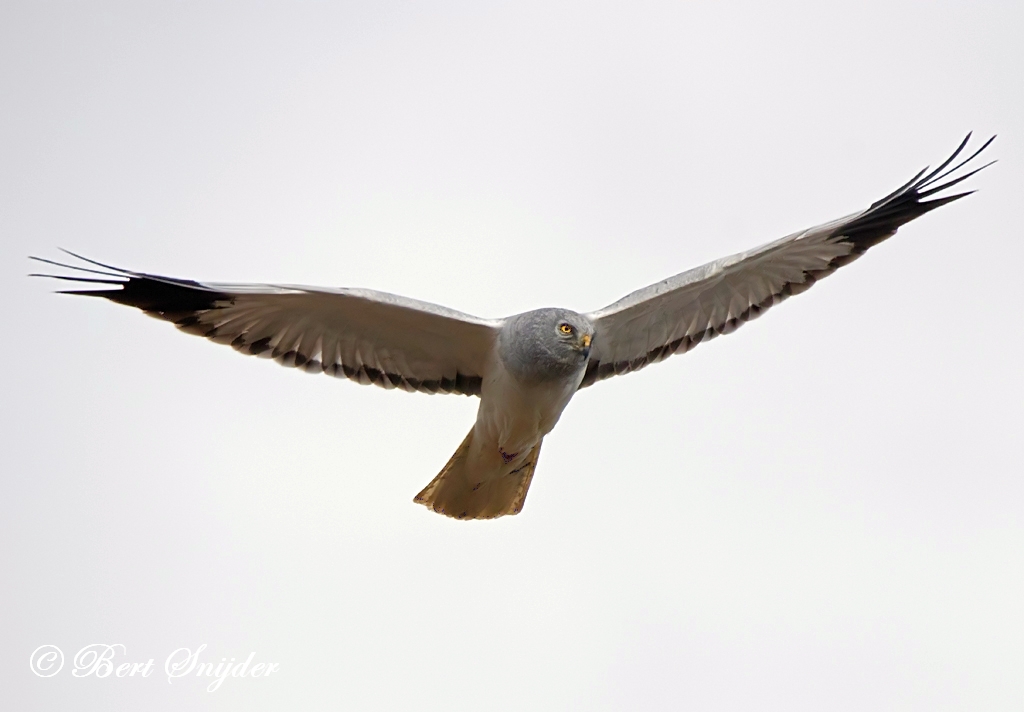
More photos at the bottom of this page:
It migrates to more southerly areas in winter. Eurasian birds move to southern Europe and southern temperate Asia, and American breeders to the southernmost USA, Mexico, and Central America. In the mildest regions, such as France, Great Britain, and the southern US, Hen Harriers may be present all year, but the higher ground is largely deserted in winter.
The Hen Harrier is 41–52 cm (16–20 in) long with a 97–122 cm (38–48 in) wingspan. It resembles other harriers in having distinct male and female plumages. The sexes also differ in weight, with males weighing 290 to 400 g (10 to 14 oz), with an average of 350 g (12 oz), and females weighing 390 to 750 g (14 to 26 oz), with an average of 530 g (19 oz). Among standard measurements, the wing chord is 32.8 to 40.6 cm (12.9 to 16.0 in), the tail is 19.3 to 25.8 cm (7.6 to 10.2 in) and the tarsus is 7.1 to 8.9 cm (2.8 to 3.5 in). It is relatively long winged and long tailed, having the longest wing and tail of any raptor occurring in North America.
The male of the nominate race, C. c. cyaneus (Linnaeus, 1766), which breeds in Europe and Asia, is mainly grey above and white below except for the upper breast, which is grey like the upperparts, and the rump, which is white; the wings are grey with black wingtips. The female is brown above with white upper tail coverts, hence females, and the similar juveniles, are often called “ringtails”. Their underparts are buff streaked with brown.
The race C. c. hudsonius (Linnaeus, 1766) breeds in North America and is sometimes considered a distinct species, C. hudsonius. The male’s plumage is darker grey than that of C. c. cyaneus and the female is also darker and more rufous. In both North American and Eurasia, the adult male is sometimes nicknamed the “Grey Ghost”, because of his striking plumage and spectral aura.
The female gives a whistled piih-eh when receiving food from the male, and her alarm call is chit-it-it-it-it-et-it. The male calls chek-chek-chek, with a more bouncing chuk-uk-uk-uk during his display flight.
This medium-sized raptor breeds on moorland, bogs, prairies, and (in Europe) farmland. The nest is built on the ground or on a mound of dirt or vegetation. Nests are made of sticks and are lined inside with grass and leaves. Four to eight (exceptionally 2 to 10) whitish eggs are laid. The eggs measure approximately 47 × 36 mm (1.9 × 1.4 in). These are the only hawk-like bird known to practice polygyny – one male mates with several females. When incubating eggs, the female sits on the nest while the male hunts and brings food to her and the chicks. Up to five females have been known to mate with one male in a season. A male will maintain a territory averaging 2.6 km2 (1.0 sq mi), though male territories have ranged from 1.7 to 150 km2 (0.66 to 58 sq mi). The eggs are incubated mostly by the female for 31 to 32 days. The male will help feed chicks after they hatch, but doesn’t usually watch them for a greater period of time than around 5 minutes. The male usually passes off food to the female, which she then feeds to the young, although later the female will capture food and simply drop into the nest for her nestlings to eat. The chicks fledge at around 36 days old, though breeding maturity isn’t reached until 2 years in females and 3 years in males.
In winter, the Hen Harrier is a bird of open country, and will then roost communally, often with Merlins and Marsh Harriers. There is now an accepted record of transatlantic vagrancy by the American subspecies, with a juvenile being recorded in Scilly, Great Britain from October 1982 to June 1983.
This is a typical harrier, with long wings held in a shallow V in its low, contour-hugging, flight. Northern or Hen Harriers hunt primarily small mammals, as do most harriers. Preferred prey include voles, cotton rats and ground squirrels. Up to 95% of the diet is comprised by small mammals. However birds are hunted with some regularity as well, especially by males. Preferred avian prey include passerines of open country (i.e. sparrows, larks, pipits), small shorebirds and the young of waterfowl and galliforms. Supplementing the diet occasionally are amphibians (especially frogs), reptiles and insects (especially orthopterans). Larger prey, such as rabbits and adult ducks are taken sometimes and harriers have been known to subdue these by drowning them underwater. Harriers hunt by surprising prey while flying low to the ground in open areas, as they drift low over fields and moors. The Harriers circle an area several times listening and looking for prey. Harriers use hearing regularly to find prey, as they have exceptionally good hearing for diurnal raptors, this being the function of their owl-like facial disc. This harrier tends to be a very vocal bird while it glides over its hunting ground.
Little information is available on longevity in Hen or Northern Harriers. It is known that the longest lived known bird was 16 years and 5 months. However, even adults rarely live more than 8 years. Mortality in the early stages of life is often related to predation. Predators of eggs and nestlings include raccoons, skunks, badgers, foxes, crows and ravens, dogs and owls. Fledgings are also predated regularly, especially by Great Horned Owls in North America. If a potential predator visits, both parents respond aggressively, issuing alarm calls and striking with talons. Short-eared Owls are natural enemies of this species that favor the same prey and habitat. More often than vica versa, harriers will harass a Short-eared Owl until it drops its prey, a practice known as kleptoparasitism.
This species has a large range, with an estimated global extent 1–20 million km², and a population estimated at 1.3 million individuals. There is evidence of a population decline, but the species is not believed to approach the thresholds for the population decline criterion of the IUCN Red List (i.e., declining more than 30% in ten years or three generations). It is therefore classified as “least concern”.



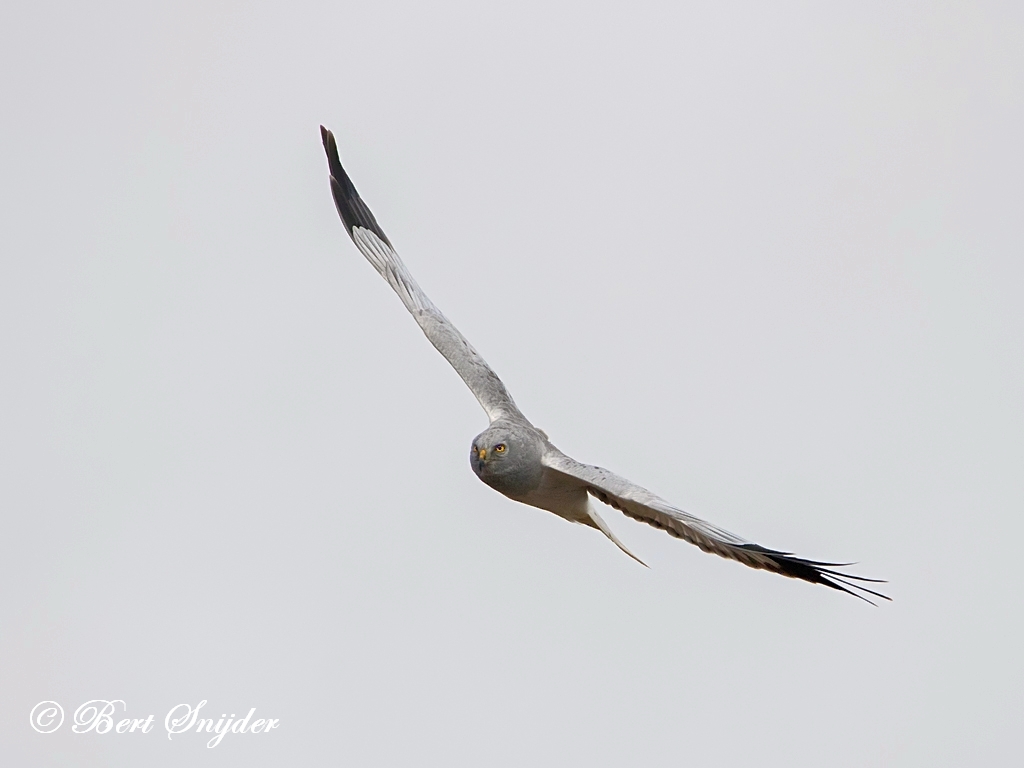
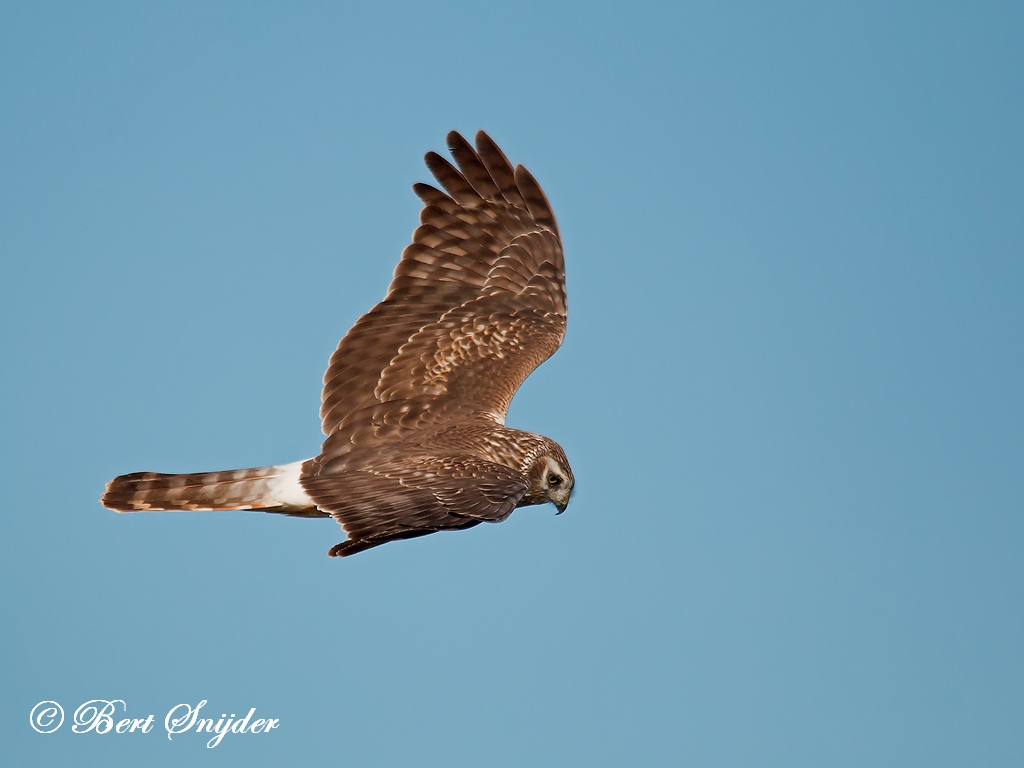
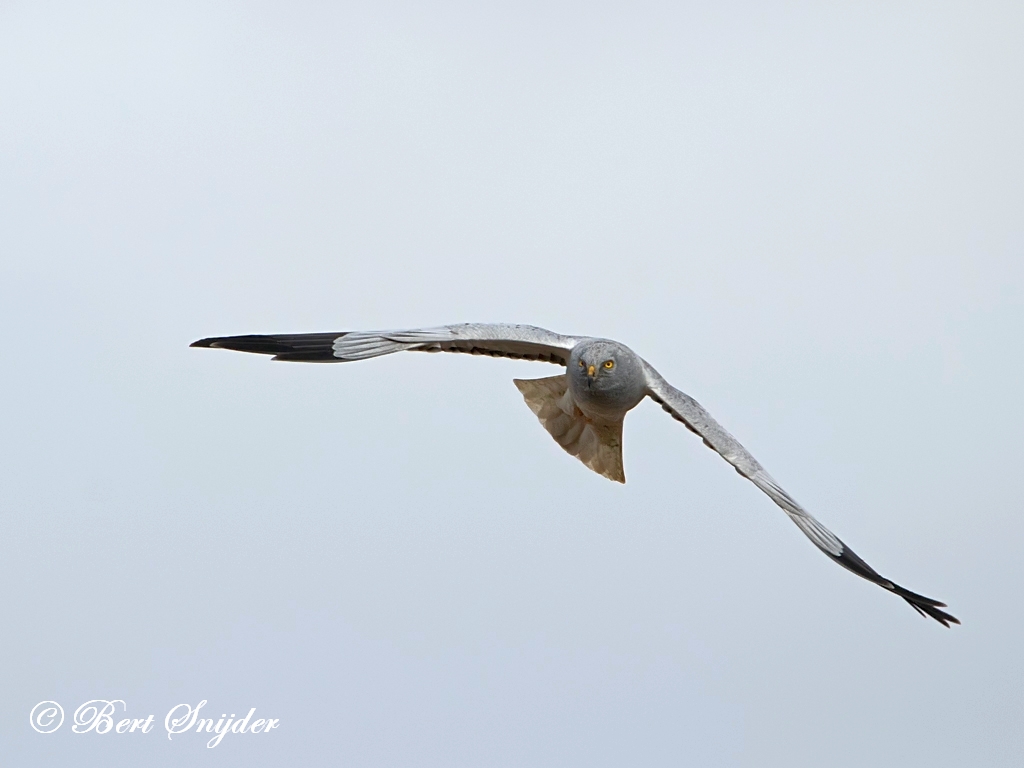

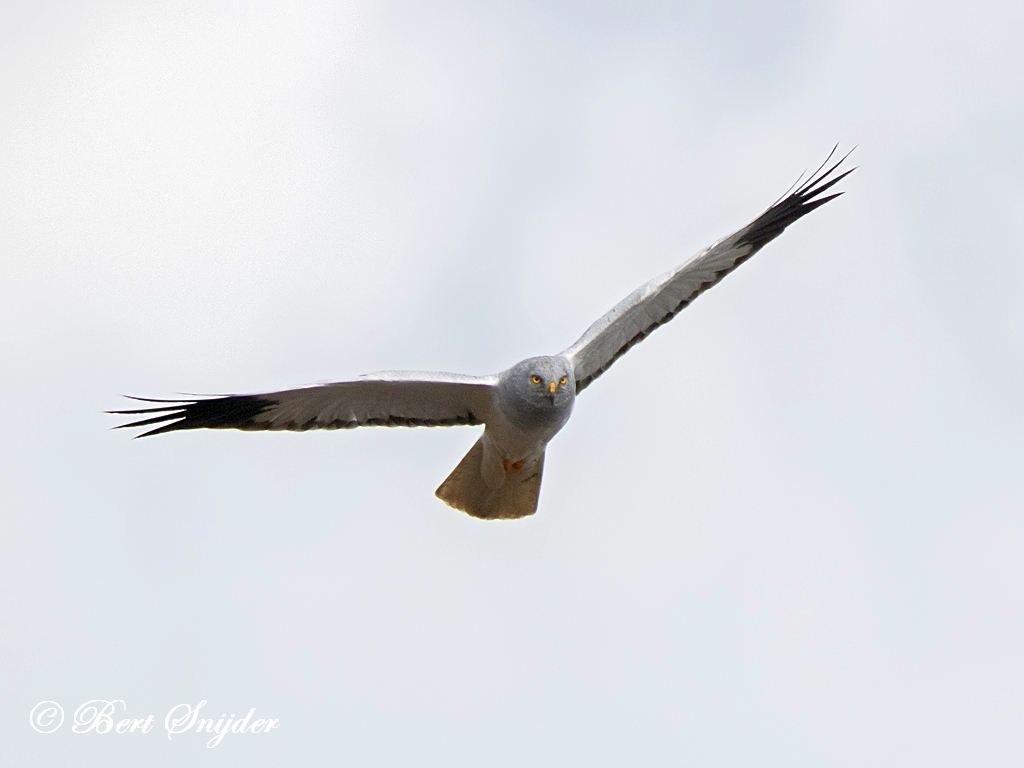

Other synonyms:
Asturian: Blanquín, El Blanquín
Breton: Ar skoul louet
Catalan: Arpella pàl·lida, Arpellot pàl·lid
Catalan (Balears): Arpella pàl·lida
Valencian: Arpellot pàl·lid
Czech: Moták pilich, moták pillich
Welsh: Barcud glâs, Bod tinwen, Bod tinwyn, Boda tinwyn, Cudwalch, Hebog llwydlas
Danish: Blå Kærhøg
German: Kornweihe, Kornweiher, Kornweiher-cyaneus
Emiliano-romagnolo: Puianétt
English: European Northern Harrier, Hen harrier, northern harrier, Northern Harrier (Eurasian)
Esperanto: Blua cirkuo
Spanish: Aguillucho Pálido, Aguilucho norteño, Aguilucho Palido, Aguilucho Pálido, Gavilán de Ciénaga, Gavilán pantanero, Gavilán Sabanero
Spanish (Colombia): Aguilucho Pálido
Spanish (Costa Rica): Aguilucho norteño
Spanish (Dominican Rep.): Gavilán Sabanero
Spanish (Honduras): Gavilán pantanero
Spanish (Mexico): gavilán rastrero
Spanish (Nicaragua): Aguilucho Pálido
Estonian: Välja-loorkull
Basque: Arpella pàl·lida, Mirotz zuri
Finnish: Sinisuohaukka
Faroese: Fenheykur, Heykur
French: Busard des roseaux, Busard Saint-Martin
Irish: Cromán na gCearc, Cromán nag Cearc
Gaelic: Aunt-eun Fiorm, Breid air Toin, Clamhan nan Cearc
Galician: Arpella pàl·lida, Gatafornela
Manx: Shirragh ny giark
Haitian Creole French: Gwo Malfini savann
Croatian: Eja Strnjarica
Hungarian: Kékes rétihéja
Icelandic: Bláheiðir
Italian: Albanella reale
Japanese: Haiiro-chuhi, haiirochuuhi, Haiiro-chuuhi
Cornish: Helghyer tynwyn
Latin: Circus cyaneus, Circus cyaneus cyaneus
Lithuanian: Javine linge
Latvian: Lauku lija
Malay: Helang Sawah Kelabu
Dutch: Blauwe kiekendief, Blauwe kuikendief
Norwegian: Blå kjerrhøk, Blåhøk, Myrhauk
Polish: blotniak zbozowy
Portuguese: tartaranhão azulado, Tartaranhão-azulado
Romansh: Melv da graun
Scots: Ant-eun fiorm, Breid air toin
Northern Sami: Jeaggefálli
Slovak: kana sivá
Slovenian: pepelasti lunj, splinec
Albanian: Shqipja e fushës
Serbian: eja livadarka, poljska eja, Poljska eja, strnarica, strnarica
Swedish: Blå kärrhök
Swahili: Kipondya Kijivubuluu
Turkish: Gökçe delice
Travel Birdwatching Holiday Alentejo, Vacation Portugal for birders to see birds on your trip. Guided Birdwatching Tours and Trips